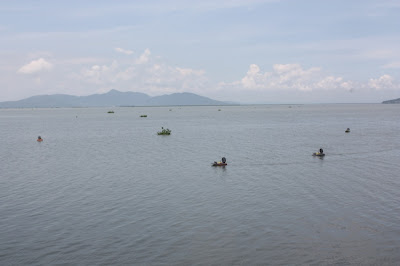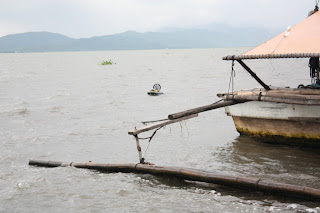The coming few weeks are going to be very exciting for the crw team. We have two big demos coming up. The first one being the Gowanus Canal test on the 29th of November and second being the Port of Pittsburgh demo on the 2nd of December. We will be using our GenX boats with some new state of the art sensors for both of these tests. Our engineers have made some improvements to the communication infrastructure which will enable the boats to travel much farther.
To those who are not familiar with the infamous Gowanus Canal, here's some history behind it. The canal is located in Brooklyn, New York and was once a major transportation route between Brooklyn and New York City. Due to the discharges from the factories and sewer overflows, the Gowanus Canal has become one of the most contaminated bodies of water in the United States. The Environmental Protection Agency (EPA) has placed the Gowanus Canal in the National Priorities List (NPL) to investigate the sources of contamination. We are planning to deploy our boats to map out the contamination in the canal. In this test, our boats will be equipped with a custom made water sampling system. The boats will also have a specialized water quality sensor that is being developed by our collaborators at Water Canary. We recently bought a few custom made sonars from New Zealand to measure the depth of water bodies. Our engineers are currently working on getting the sonar integrated into our system in time for these tests.
The second test is going to be a big one. We are having a demo for the Port of Pittsburgh to demonstrate the capability of our boats. In this demo we will also be demonstrating a new feature where our boats will detect buoys in the river and verify whether they are at the right location. Buoys are placed in shallow areas of the river to warn barges and cruise boats, however they drift and get displaced. Our boats can potentially be used to verify the buoy's locations and warn the authorities incase their positions need to be readjusted. Yesterday, a couple of us went scouting to find a good place to launch the boats on the day of the demo.
We thought we found the perfect place, until we went closer and found the river bank full of rocks. Although our Chief Deployment Officer wont be present for these tests, our brave and talented shore team will surely manage. On second thought, maybe we will look for a better launch site.
Stay tuned for the first river test sometime this week!
 |
| Gowanus Canal, Brooklyn, New York |
To those who are not familiar with the infamous Gowanus Canal, here's some history behind it. The canal is located in Brooklyn, New York and was once a major transportation route between Brooklyn and New York City. Due to the discharges from the factories and sewer overflows, the Gowanus Canal has become one of the most contaminated bodies of water in the United States. The Environmental Protection Agency (EPA) has placed the Gowanus Canal in the National Priorities List (NPL) to investigate the sources of contamination. We are planning to deploy our boats to map out the contamination in the canal. In this test, our boats will be equipped with a custom made water sampling system. The boats will also have a specialized water quality sensor that is being developed by our collaborators at Water Canary. We recently bought a few custom made sonars from New Zealand to measure the depth of water bodies. Our engineers are currently working on getting the sonar integrated into our system in time for these tests.
The second test is going to be a big one. We are having a demo for the Port of Pittsburgh to demonstrate the capability of our boats. In this demo we will also be demonstrating a new feature where our boats will detect buoys in the river and verify whether they are at the right location. Buoys are placed in shallow areas of the river to warn barges and cruise boats, however they drift and get displaced. Our boats can potentially be used to verify the buoy's locations and warn the authorities incase their positions need to be readjusted. Yesterday, a couple of us went scouting to find a good place to launch the boats on the day of the demo.
Stay tuned for the first river test sometime this week!





















































